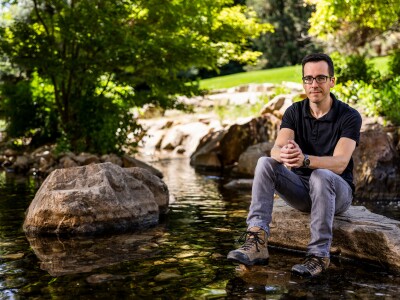There is a growing movement among biologists to devote increasing resources to the ambitious goal of cataloging and organizing all species on Earth into a vast "Tree of Life." Understanding how seagulls are related to eagles, determining who are the crocodile's cousins and finding where koalas come from have countless implications for conservation, medicine and environmental science.
In a commentary in the new issue of this country's premier scientific journal, "Science," a Brigham Young University population genetics expert endorses tapping vast computing power to fill in missing branches of the tree before species extinctions make it too late.
Keith A. Crandall, associate professor of biology, writing with one of his Ph.D. candidates, Jennifer Buhay, advocates the methods of some California researchers who mined various public databases for genetic information about 100,000 species and compared the DNA sequences to determine relationships. Although no complete genomes were included, the group's computer analysis still yielded a viable outline of the "tree."
The consequence, say Crandall and Buhay, is that scientists need not spend extensive time and resources defining the "trunk" and "thick branches" of the tree (see diagram), but instead should seek to gather genetic information from all the "leaves," or individual species. The trunk and branches can be filled in by computer analysis of the leaves.
"While we are busily trying to figure out these big branches, the leaves are dropping off of the tree in the sense that species are going extinct," Crandall says. "And we aren't going to be able to study these leaves if we don't get out there and figure out what they are right now."
Simply looking at animals and plants and documenting their physical differences isn't enough, the researchers say. Only through cataloging and comparing their DNA signatures can relationships be established throughout the entire tree – DNA provides the universal character set.
"For each group of organisms it is very unclear as to what the relationships are between certain things," said Buhay. "You can't protect things that you don't know are there. There are a lot of unknown species out there, not just in places we haven't been to yet, but hidden because they look the same as something next door."
For example, Crandall pointed out a recent discovery in Guatemala of ten caterpillars that looked very different from one another, but the butterflies that emerged looked exactly the same. Until then, the ten butterfly species were thought to be only one.
"It's just amazing our lack of knowledge of species on the planet Earth given the kinds of money we spend to go to Mars to search for life, for example," Crandall said. "Billions of dollars a year to go to Mars to search for life when we can't even articulate the life that's here on our own planet. The estimates range from four million existing species to a hundred million species, and we are losing about 20,000 species a year."
But why does it matter how various animals and plants are related, Crandall is sometimes asked. So what if ten butterflies that look alike are members of different species or not?
"Well, if you plow over their habitat to build your new condominium, guess what, it doesn't matter," Crandall said. "But when we are spending millions of dollars to preserve and conserve regions rich in biodiversity (many forms of life), we need to have accurate counts."
Conserving species and slowing the rate of extinction on Earth are important for two broad reasons, he said. First, humans have a moral obligation to be wise stewards of this planet. Second, knowing the close relatives of useful plants and animals can narrow the search for compounds with medicinal and agricultural applications.
Segments of the tree already fulfill Crandall's vision. He pointed out a Web site maintained by the University of Auckland that offers a free database of whale DNA sequences.
"You can go to the sushi bar, take some of the whale you were eating back to the lab and sequence the DNA, then do a search of your sequence against their database and find out what species it is and where it came from," he said.
Eventually he foresees DNA sequencing equipment small enough that scientists in the field can immediately determine the genetic code for a new specimen they have discovered and compare it to existing records in hopes of identifying it.
"So the real key to making all of this stuff work is to have a viable database," Crandall said. "We need to fill in all the leaves before too many of them fall off."





